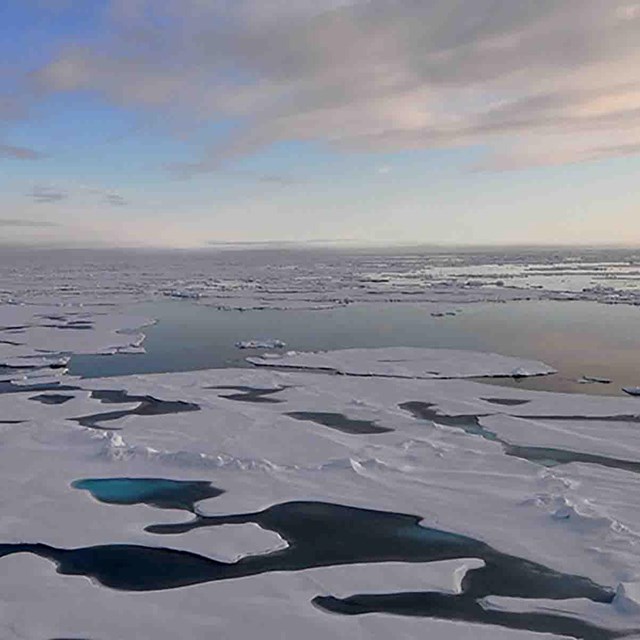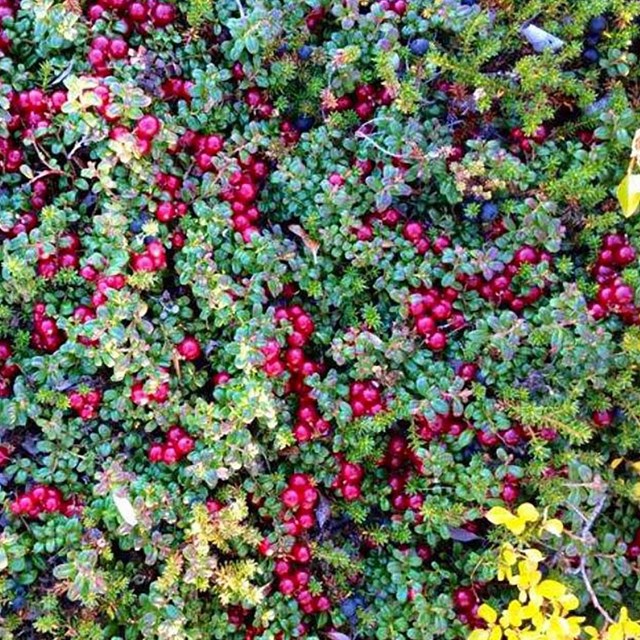People who have deep connections to the land and sea around them are key witnesses to environmental change. Their observations are essential for building a broader understanding of the past, of how things are changing, of the effects this change is having on people, and planning for future adaptation.
Documenting traditional local knowledge is also critical to interpreting previously collected scientific data and guiding future work. Local observations of environmental change provide new insights into what climate change means for Alaska’s national parks.
Climate change does not just affect wildlife and glaciers. People living in and near parks on the frontlines of climate change have shown how deep the human impacts can be. Thawed permafrost causes landscape slumps that can damage infrastructure such as roads, airstrips, houses, and utility lines. It can also cause or contribute to the severity of landslides. Many people in the Arctic depend on frozen ground to travel to hunting areas or between villages; as the ground thaws, transportation and access to resources is impacted.
-
 Sea Ice
Sea IceWith the loss of sea ice, people may not have safe access to traditional hunting areas for resources they depend on.
-
 Seasonal Change and Subsistence Activity
Seasonal Change and Subsistence ActivityAnimal migration patterns, distribution, and habitat are changing, which can reduce access to traditional use of these resources.
-
 Coastal Erosion
Coastal ErosionCoastal erosion and sea level rise endanger some coastal communities. Some are looking at relocation options.

Photo credit: Guy Norman Omnik
Nunaaqqit Savaqatigivlugich: Working With Communities to Observe the Arctic
“What is a key environmental change in your community that you want people to know about?” “The sea ice and permafrost are melting too fast.“
– Joe Mello Leavitt [Iñupiat], Utqiaġvik (AAOKH 2023).
Numerous lines of evidence indicate how climate change is unfolding in the Arctic. Understanding and responding to these changes, many of which impact coastal Indigenous communities, can be strengthened by the inclusion of community-based observations. Community-based observations provide a local perspective not available through conventional scientific methods alone and can fill existing spatial or temporal knowledge gaps.
The Alaska Arctic Observatory and Knowledge Hub (AAOKH) is a collaboration between university scientists and a network of Iñupiaq observers in northern Alaska coastal communities. AAOKH (pronounced “A-OK”) provides long-term documentation of weather, ocean, sea ice, and landscape conditions and context to wildlife, harvesting, and cultural and community activities by creating space for Indigenous Knowledge holders to share their expertise and observations of environmental change. The primary objectives of AAOKH, determined by the observers, are to sustain Arctic Indigenous observing, support Indigenous scholarship, and apply observations to inform decision-making in response to environmental change. Here, we describe themes in environmental changes observed across the AAOKH network. We also describe our overall efforts to increase knowledge exchange, leveraging our experiences combining scientific measurements with observations to create relevant data products that can directly support community priorities. READ MORE [From the Arctic Report Card, 2023]
Headlines
- The Alaska Arctic Observatory and Knowledge Hub (AAOKH) works with a network of coastal Indigenous observers to document long-term and holistic observations of environmental change and impacts in northern Alaska.
- Recently, Indigenous observers have noted sea ice loss, warmer air and ocean temperatures, changing wind patterns, and increased intensity and frequency of coastal storms that contribute to flooding and erosion.
- Indigenous observers also document local-scale impacts of environmental changes to community and cultural infrastructure, traditional harvests and activities, and travel safety across the land and sea.
- Applying and centering Indigenous perspectives and observations of Arctic change in decision-making can lead to more inclusive, equitable, and community-led responses.
Last updated: December 14, 2023
